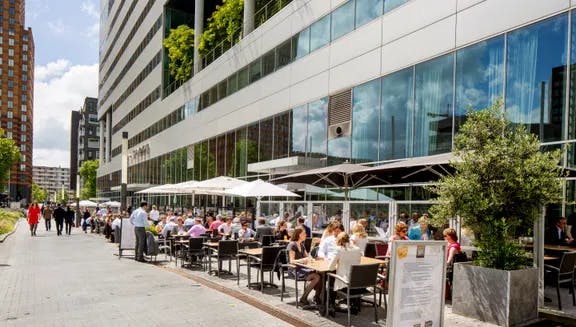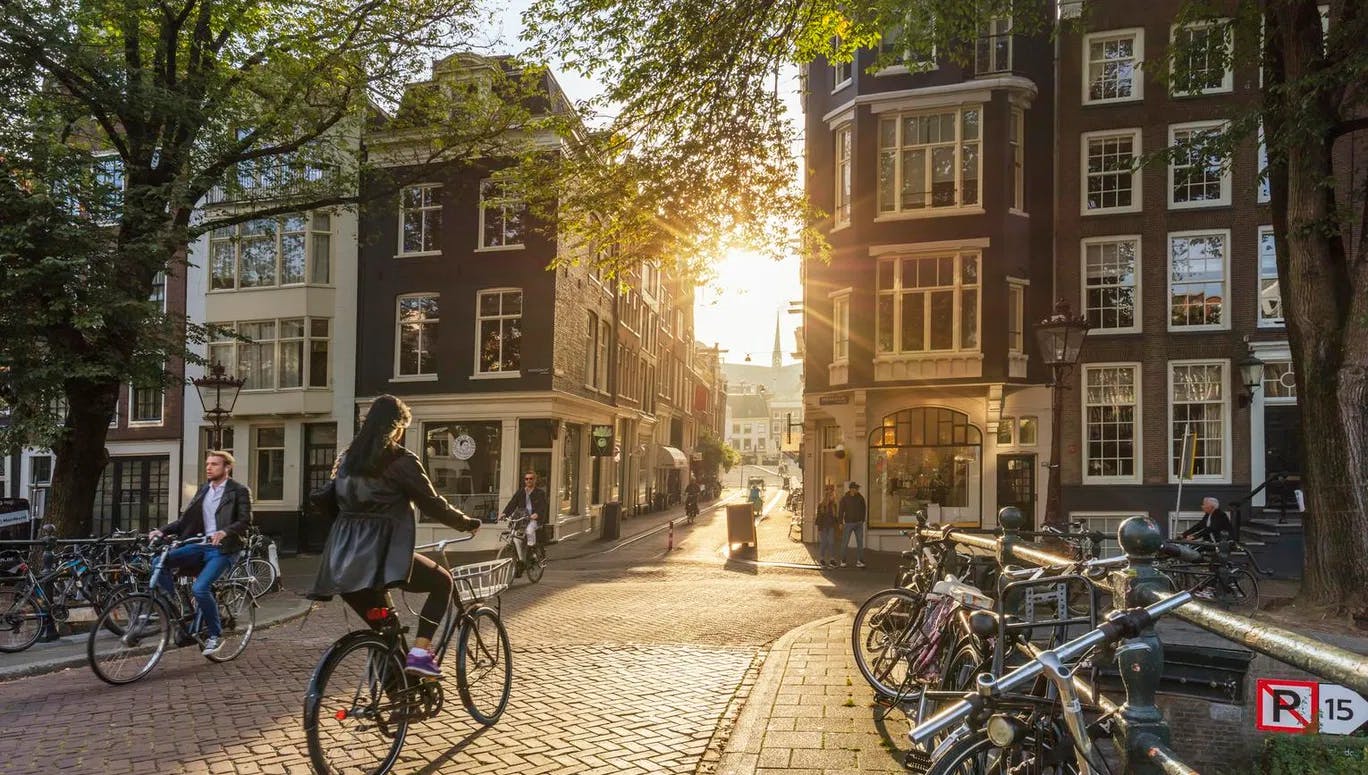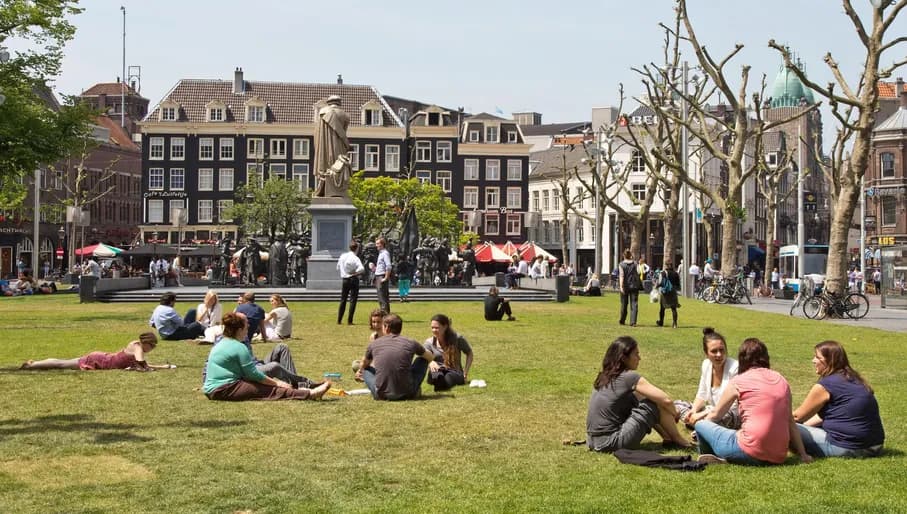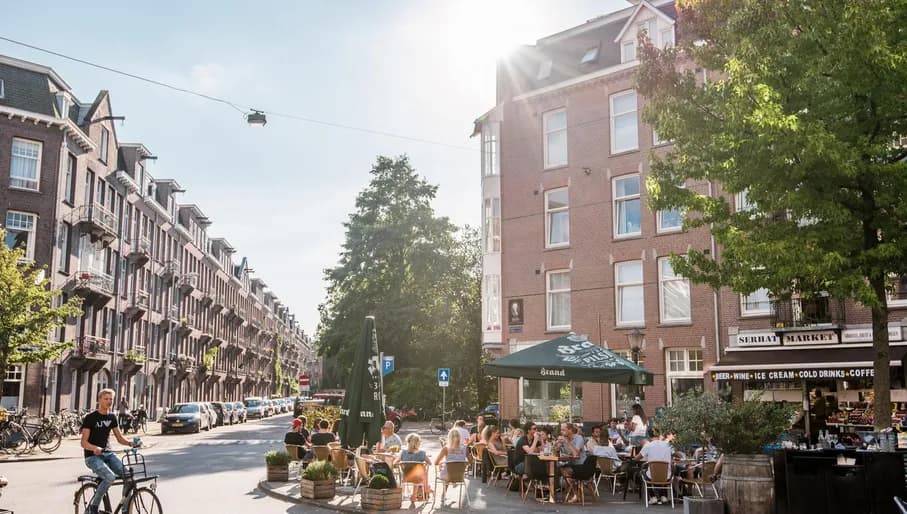
Opening a bank account
12 November 2024

Calculating the costs of relocating to another country can be overwhelming. So, let’s break it down into stages. First thing’s first – you may need a relocation service. Most offer free quotes unique to your situation so you can budget for your move. Our top tip? Pack light if you haven’t found long-term accommodation yet – you can always ship things over once you’re settled. And hey – there are some great places to find furniture in Amsterdam, too. But more on that later…
So, you’ve touched down in the Netherlands – welkom! You may have read our 10 step guide to moving to the Amsterdam area, but what should you budget for your first month? Let’s start with the roof over your head. Unless you’ve already arranged long-term accommodation, you’ll have to organise temporary housing. Short-stay private rentals are a good option here as they’re furnished and cheaper than hotels or Airbnb. Our partners like Hotel Jansen offer six-month stays from €1045 to €2245 a month, whereas Corporate Housing Factory offers nightly rates between €190 and €298.
Next up: your bike – a pretty important expense in the city home to more bikes than residents. You can pick up a bike in good condition for €100-€150 at one of the hundreds of the city’s ‘fietsenwinkels’. Subscription-based models like Swapfiets, which loans bikes from €16.58 per month, are also a popular option. Not quite ready for a two-wheeled commute? If you travel regularly on Amsterdam’s metro, tram, bus or national rail networks, get yourself a personal OV-chip card for €7.50 and subscribe to a discounted season ticket. Otherwise, you can also simply check in and out of public transport with your bank card or by using Apple pay. Handy!
Opening a Dutch bank account is usually free, however most charge a monthly fee depending on your account type. A basic account with ABN AMRO costs €3.25 a month, with ING €3.20 (or free for students), and the online-only bank Bunq offers bank accounts from €3.99 to €18.99 a month.

Once you’ve landed, you can get connected right away with a tailored phone contract to suit your needs (a standard two-year SIM-only contract costs around €25 a month). Oh, and if you set up your WiFi with the same provider, you’ll save on both subscriptions. WiFi costs vary depending on your package and provider, but prices range from €20 to €25 a month for a basic internet connection and up to €65 euros a month for all-inclusive bundles.
Your biggest fixed monthly cost while living in the Amsterdam Area will be your rent. Most likely, you’ll rent from the private or ‘vrije sector’. Rental properties that cost over €808.06 per month aren’t government-controlled, unlike social housing, and rent tends to be expensive. According to Statista, rental prices have increased the past few years, with the price per square metre in Amsterdam averaging 26 euros in 2023. This is in part due to scarcity.
For that reason, it’s best to broaden your search: you’ll get more space for your money a little further out, and the region is very well connected (try out our MapitOut tool to familiarise yourself with the travel times in the Amsterdam Area).
Renting rooms rather than whole apartments will save you some money, too. Try sites like Kamernet, or join Facebook groups to connect with people looking for roommates: you’ll be in with a better chance of finding a house when you have a good network.
There are also monthly costs for water, gas and electricity. Waternet is the water provider in the Amsterdam Area, and the charge for tap water and maintenance depends on your usage: in 2024, that’s €1.13 euro per m³. Electricity and gas is privatised, so you can pick your provider: comparison websites like Energievergelijk can help you choose.

Everyone who lives or works in the Netherlands is legally obliged to take out health insurance. All insurers offer the same basic package which you pay for monthly. The average premium is €146 a month, but can vary depending on your personal ‘add ons’. Be aware that even with a basic package, you’ll have to pay a yearly set amount (eigen risico) before your insurer covers the costs. In 2024-2026, the excess will be €385.
Are you moving to the Netherlands with little ones? It’s worth gauging how much their education will cost. Dutch schools are government-funded and free. Some international schools are partially subsidised, so they can offer yearly fees of between €3,600 - €8,000 per child. Private international schools can cost between €12,000 and €26,000 per child annually.
Good to know: childcare allowance (kinderopvangtoeslag) is a financial compensation for parents towards the costs of childcare. How much you receive is calculated on a sliding scale based on your income. Check our Child Benefit article for more information.
Of course, income is an important factor when considering the cost of living of a place. The average annual income of a working person is €44,000 in 2024 - and there are plenty more statistics you can find on Statista or the Dutch Bureau for Statistics, CBS.
Want more information about the cost of living? Crowd-sourced websites like Expatistan paint an accurate picture of day-to-day expenses like groceries, restaurants, gym memberships and other activities. For example, a cappuccino costs about €4.05, 3 litres of laundry detergent is €13, and you’ll spend around €60 on a basic meal out for two.
If you’re looking to save money on furniture and clothing while you’re here, the Amsterdam Area is home to lots of fantastic thrift stores – or ‘kringloops’ – that offer quality second-hand items for less. And for when you’re bargain hunting online, check out Marktplaats.
Have you got more questions about daily life in the Netherlands? Set up an appointment with the free help desk ACCESS.